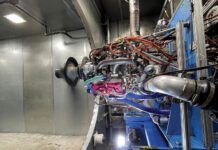Diesels and the Lunatic Fringe
After preparing the report on Diamonds diesel twin for this issue, I freely confess that I am exactly the wrong guy to judge a diesel airplanes market potential in the U.S. In my view, if the thing runs, has an acceptable climb rate and an okay cruise speed, Im pre-disposed to pick a diesel over a gasoline engine. But then Im a guy who will fly a Mooney lean of peak to save a couple of gallons of gas in exchange for seven or eight fewer knots of cruise speed. I think SUVs are a gross waste of gas for trips to the country club and I obsessively turn off unused lights. None of this has a thing to do with environmentalism. Im not green, Im just cheap. I give the word skinflint a bad name.
As a demographic, pilots generally don’t share my view. Even at $3.50 a gallon, they rightly view fuel as the cheapest expense in owning an airplane, running second behind purchase and maintenance costs. People buy airplanes to go fast and they don’t mind paying for the fuel to do it. So a diesel twin that burns 12 gallons total per hour to cruise in the mid-160s and costs half a million bucks might not light a lot of fires in the U.S. But if avgas reaches the inevitable $4 or actually becomes unavailable, Diamonds diesel twin may look overwhelmingly attractive. In the meantime, I predict Diamond will find a strong flight school market for the Twin Star when its introduced in the U.S.
A school flying a twin 100 hours a month will burn 12 to 14 GPH in the diesel twin, but 18 to 22 GPS in the Lycoming version or another light twin. The diesel consumes 1000 gallons less a month, a savings of up to $3000 or more. Thats without considering a slight Jet-A price break and an amount that would pay for financing a new purchase. It also assumes that the diesels will have the same or better maintenance costs as gas engines do. Thats a huge if.
As for the Lycoming version of the Twin Star, Diamond believes its a better fit for the U.S. market because U.S. pilots expect better performance and are willing to pay for it. The Lycoming-powered version climbs better than the diesel and has brisker takeoff performance, but its cruise numbers are only 7 or 8 knots faster on nearly twice the fuel flow. But, I flew a test article, not a production airplane. Diamonds Peter Maurer told me he thinks that with further tweaking of props and other improvements, the airplane can reach 185 knots. Diamonds European CEO, Michael Feinig, is keen to consider turbonormalizing, which would push cruise we’ll over 200 knots in the high teens.
That would be the tipping point for me toward the gas engines because properly set-up, the Lycs can run lean of peak and my guess is that the airplane could turn in high 180s and 190s in the teens, on not much more fuel than the diesel burns. But for a cheapskate such as myself, the diesels 160 knots on 11 GPH in a twin as nicely refined as the Twin Star is has an intoxicating allure. I don’t have to go fast as long as I can go far. But thats a minority view and you cant build a business plan selling airplanes to wackos like me.
———-
Whats Cessna Up To?
Were hearing tantalizing rumors that Cessna is about to unveil a new piston aircraft thats larger than a 206, but not a twin and not a turbine. If the grapevine is correct, the company has a fuselage mock-up but is mulling over a powerplant. If this is true-and Cessna wont say-the company faces a dilemma.
A new airframe will need to make more than a passing nod to fuel efficiency and Cessnas own sister company, Lycoming, cant claim to have a fuel-efficient large-displacement engine. But Continental does. And so does Thielert, in the form of a recently certified 325-HP turbocharged diesel. The perfect market timing, in my view, would be a year from now, after Diamond has softened up resistance to diesels with the DA42 project. Watch this space next summer to see if Im right.
-Paul Bertorelli




